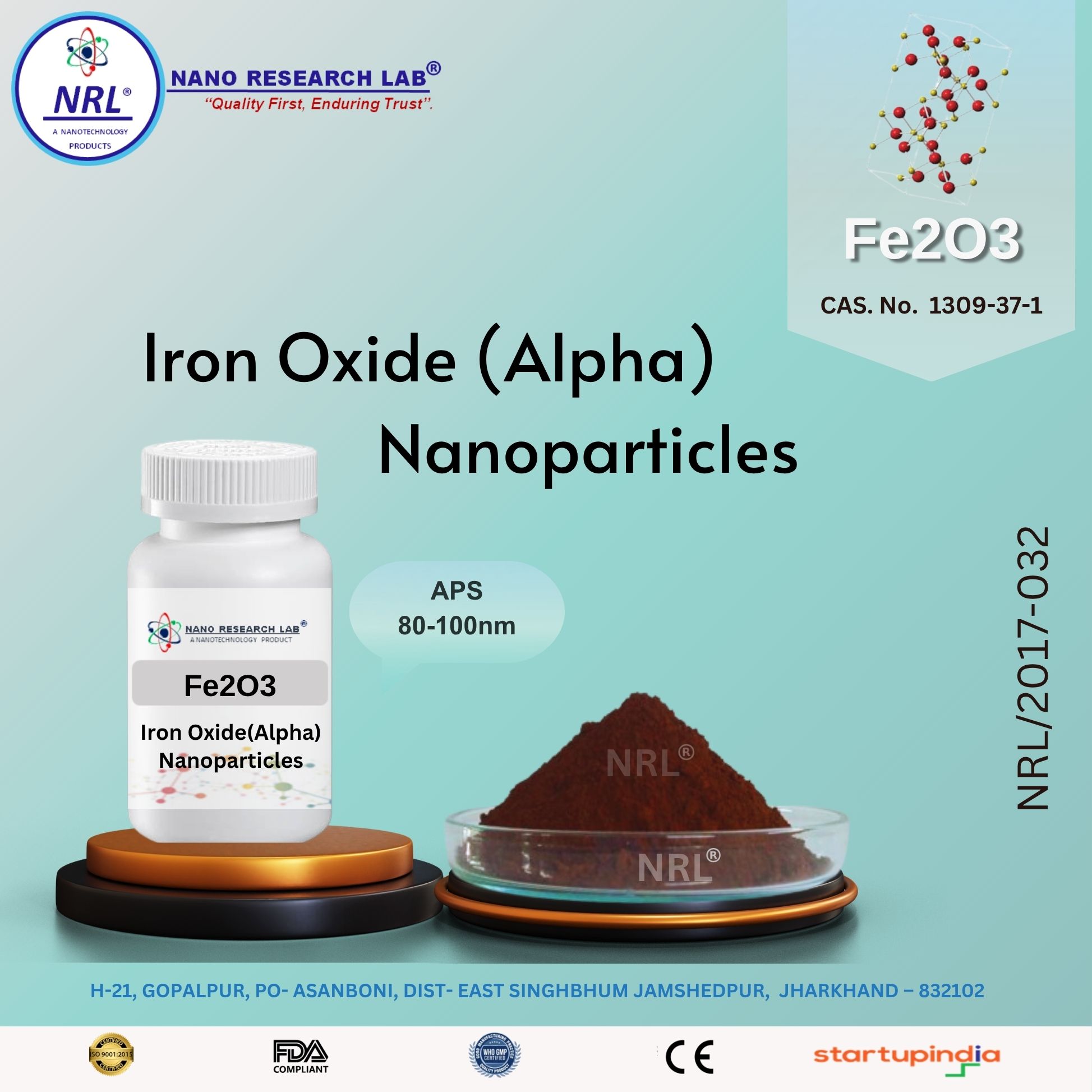
Iron Oxide Nanoparticles/Nanopowder (Fe2O3, Alpha, 80-100nm, purity 99.5% )
₹1475.00
Iron Oxide Nanoparticles / Nanopowder (α-Fe₂O₃, 80–100 nm, Purity 99.5%)
Technical Specifications
Property | Specification |
|---|---|
Chemical Name | Iron(III) Oxide (α-Fe₂O₃, Hematite) |
CAS Number | 1309-37-1 |
Molecular Weight | 159.69 g/mol |
Purity | ≥ 99.5% |
Appearance / Color | Red-Brown Fine Powder |
Particle Size (Average) | 80–100 nm |
Morphology | Nearly Spherical / Irregular |
Crystal Structure | Hexagonal (Rhombohedral) |
Density | 5.26 g/cm³ |
Specific Surface Area (BET) | 15–40 m²/g |
Melting Point | 1565 °C |
Boiling Point | Decomposes above 2000 °C |
Solubility | Insoluble in water; soluble in strong acids |
Magnetic Properties | Weakly ferromagnetic / Antiferromagnetic (α-phase) |
pH (in aqueous suspension) | ~7.0 |
Stability | Chemically stable; non-hygroscopic under normal conditions |
Key Features
High Purity (≥ 99.5%) ensuring consistent quality and minimal contamination.
Controlled Particle Size (80–100 nm) suitable for applications requiring lower surface area than smaller nanoparticles.
Stable α-Fe₂O₃ Phase: Chemically and thermally robust.
Red-Brown Fine Powder: Easy to handle, mix, and incorporate into composites.
Magnetic Properties: Useful in magnetic studies and material science applications.
Uniform Morphology: Promotes homogeneous dispersion in various media.
Lower Surface Area: Reduced agglomeration compared to smaller nanoparticles while maintaining reactivity.
Applications
1. Catalysis:
Acts as catalyst or catalyst support in oxidation and redox reactions.
Suitable for industrial and environmental catalysis where lower surface area is acceptable.
2. Magnetic Materials & Electronics:
Applied in magnetic sensors, ferrofluids, and magnetic material research.
3. Pigments & Coatings:
Used as red-brown pigment in paints, coatings, ceramics, and plastics.
Provides thermal and UV stability.
4. Environmental & Water Treatment:
Functions as adsorbent for heavy metals and pollutants.
Effective for wastewater treatment and contaminant removal.
5. Biomedical & Research Applications:
Investigated for drug delivery, biosensors, and magnetic hyperthermia (research grade).
6. Nanotechnology & Advanced Materials:
Suitable for nanocomposites, energy storage systems, and spintronic devices.
Used in applications where larger particle size is beneficial for reduced surface reactivity or aggregation.
